Hopefully after our journey through Part I, Part II, Part III and Part IV of this series it is clear that youth benefit from a variety of stimuli in their overall training plan. Resistance training is a critically important part of this approach. The question now becomes: what is the ideal dose of resistance training in the youth athlete population?
Youth athletes are going through a critical developmental period biologically, psychologically, and socially. These constraints and outside obligations will influence individual dosing parameters and determine how much additional loading an athlete can tolerate (beyond meeting physical activity guidelines). The most evidence-informed plan is still disadvantageous if it does not account for these sorts of outside factors. Coaches should also avoid over-emphasizing gains in the weight room at the expense of increasing an athlete’s risk of injury in the gym, pool, or on the playing field.
While no one training modality is inherently superior to another, we will advocate for training built around the primary movements of the squat, bench, press, and deadlift with a barbell. We view the barbell as the most scalable implementation commonly available to most coaches, parents, and athletes. Other implements such as dumbbells, kettlebells, sandbags, and other implements can have a place in training, but for the most part they are less adjustable and tend to be produced in smaller sizes.
The current best evidence for resistance training dosing comes from Lesinski et al which advocates for at least 23 weeks or more of resistance training, involving 5 sets of 6-8 repetitions at 80-89% 1RM with 3-4 minutes rest in between sets. The well-trained reader will observe that 5 sets of 8 at 80-89% of 1RM would be a nearly impossible workout to complete for an individual, much less multiple times in one week. This is likely a reflection of youth being so undertrained that the 1-repetition maximums (and percentages thereof) are not comparable to those of a more well-trained individual.
So, what can be taken from these recommendations?
Duration
First, that an 8 week program is not sufficient in order to establish long-term gains. Athletes should have resistance training as part of their programming for the majority of the year. While short camps can teach technique and introduce new lifts, the adaptation to that stimulus decreases once it is removed. The principle of reversibility holds that in order for positive training effects (PTE) to accrue, the stimulus eliciting those effects must continue as well.
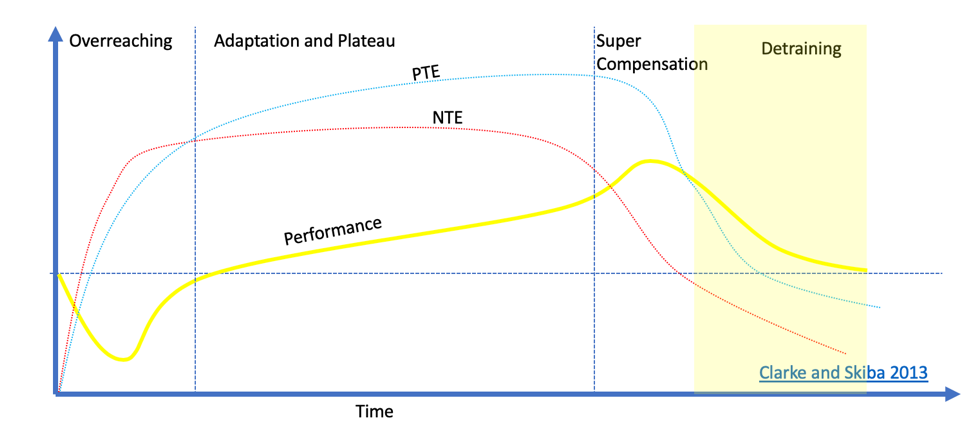
No one expects an athlete to go to one basketball camp and demonstrate improved skills six months later if that athlete does not continue to develop those skills. Similarly, we should not expect a teenager to go through one strength-focused training block and continue to demonstrate these strength improvements over the long term. There may be fluctuations in training as a function of competitive demands, but the training should always be there to some degree. Athletes should not participate in year-round competition before adolescence, especially for one sport, so there should be ample time to initiate strength training.
During an off-season, an athlete may be able to strength train upwards of 4 days/week. The decreased volume of sport-specific training can allow for more thorough programming and athletic development. It cannot be stressed enough that off-season periods are needed in order to make gains in overall athletic prowess. The strength adaptations that can be gained through a well-designed program over an 8 week offseason can likely be more maintained through a 1-2x/week program in season, than by constantly trying to create small adaptations through a 2x/week program in the midst of dealing with significant sport stress.
An in-season athlete should still participate in resistance training, but likely at an overall decreased frequency. The primary focus during this period is maximizing performance in their specific sport. However, the Long Term Athletic Development model should still be kept in mind, and athletic principles are paramount prior to late adolescence and adulthood.
Intensity
Next, a prescription of 5 sets of 6-8 repetitions at 80-89% involves fewer exercises than most programs advocate, and involves a high intensity. Most coaches are uncomfortable subjecting the adolescent athlete to 1RM efforts, and fortunately this is not necessary. However, adaptation does necessitate a degree of overload. Training with the same load, and especially a dramatically submaximal load, will eventually fail to elicit continued strength gains over the long term. Practicing hitting a 50 mph fastball does not sufficiently prepare you for hitting an 85 mph fastball. In the same regard, jumping straight to an 85 mph fastball is not the best way to make progressive improvement.
Each athlete has a “baseline” level of fitness that must be stimulated beyond current abilities in order to improve. Most youth athletes’ strength training baseline is effectively zero, so any initial stimulus is likely to generate adaptation, even at relatively low doses. In addition to a “baseline” level of fitness, every athlete has an upper limit to the dose of training stimulus they can tolerate at any given time, which we will term the “maximum capacity”.
These two anchors give us an envelope of function within which to apply load safely and effectively. Here, there is a zone of homeostasis from which no particular gains will be induced. Beyond that, there is a supraphysiological load that does allow for adaptation to occur, with a ceiling effect at maximum capacity. These concepts have been studied using the framework of “acute” versus “chronic” training loads, which compare the current (or acute) dose of training stimulus compared to the baseline level of fitness achieved by chronic training loads.
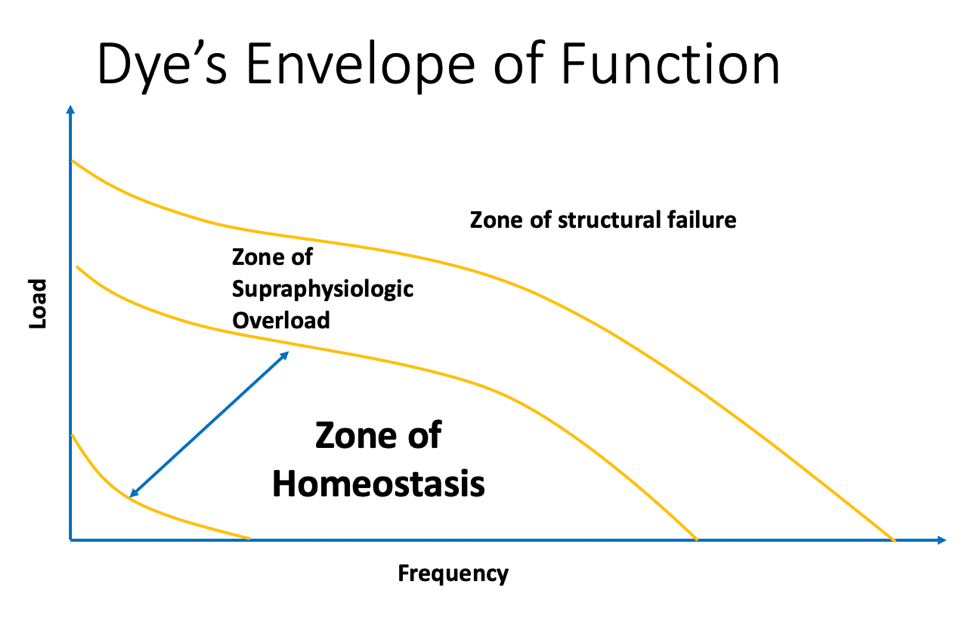
Without getting caught up in absolute thresholds, it is important to recognize that there is an enormous inter-individual variability in how well a given athlete may tolerate changes in training load, and that no metric has not shown strong predictive power on an individual level with respect to sports injury. Additionally, it is important to avoid the temptation of reductionism, and to recall that mechanisms of sports injury are complex and multifactorial. Current paradigms favor “overuse” as a means of defining injuries but a movement has transpired to change this terminology to “training load error.” The issue here being that load is multifactorial and related as much to stress outside of the pitch, field, or pool, so many authors still favor “overuse.”
So, instead of basing training off of 1RM performance, we advocate for using the Rating of Perceived Exertion (RPE) scale. It functions as a 1-10 scale anchored at “1” being no real effort and “10” being maximum effort, but it is based on an athlete’s subjective report. This allows for the principle of autoregulation, or an athlete’s ability to determine what constitutes “hard,” to drive selection of loads. It has also been mapped to Repetitions In Reserve (RIR), where “0 RIR” represents a maximum effort (RPE 10), 1 RIR means an athlete could perform one more repetition (9 RPE), 2 RIR means two more repetitions prior to failure (8 RPE), etc. These metrics allow for an athlete to train at heavy loads, but with a buffer against maximum effort.
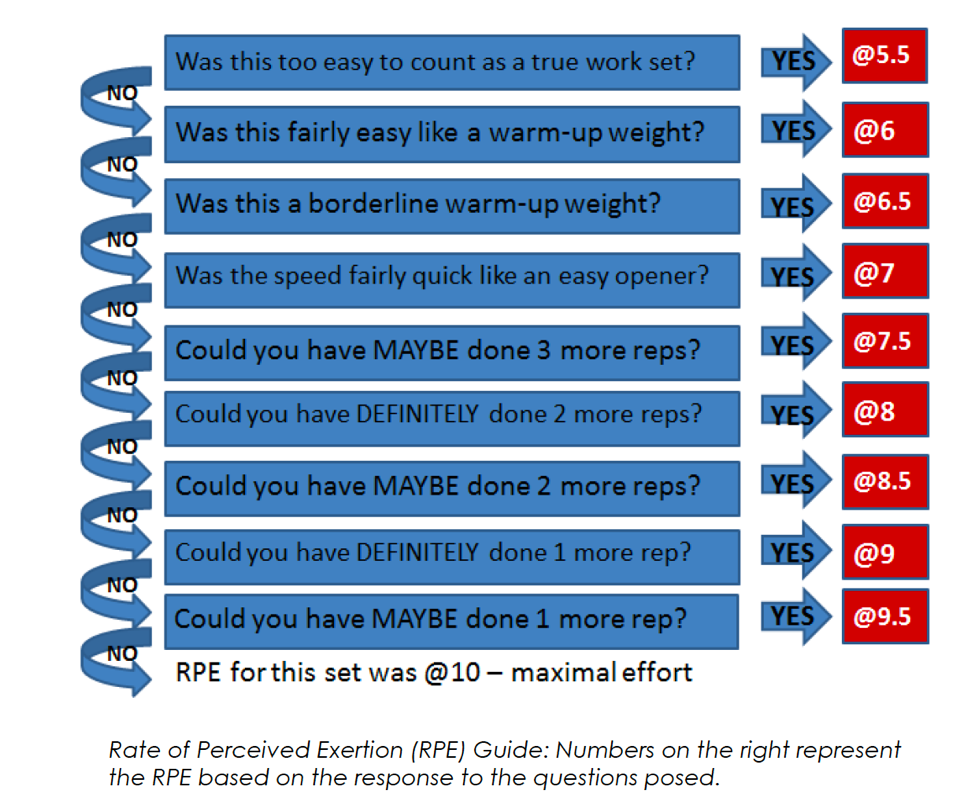
For an excellent overview of RPE, there are two videos (here and here) linked below from Barbell Medicine staff coach Alan Thrall explaining the principles.
The use of these gauges of relative intensity does require some initial learning, however, the concern is not how much an athlete lifts immediately, but rather the progress they make over time. In the beginning there likely will be reflective conversations regarding what constitutes hard, but this will improve with experience. There are also variables regarding the skill and novelty of an activity. When first learning to squat or deadlift, the technical component will factor into perceived exertion, but over time the athlete becomes more technically proficient in the movement and effort becomes the main driver of the rating.

If we take the recommendations from Lesinski and convert them to more an RPE/RIR format, we are left with:
5 exercises of 6-8 repetitions at 7-9 RPE, or 1-3 RIR
The above format would be easier to titrate according to an athlete’s skill level, where they are in season, and the external stresses they may be facing either via school load or social obligations. It also mitigates the desire for training to be viewed as a linear process. An athlete, especially one in season, should not expect to continue seeing linear gains in strength for a prolonged period of time. If an athlete underwent a series of hard practices in their respective sport, what might constitute a set at 8 RPE (2 RIR) would likely require a lower weight than if they were at a lighter volume of sports training. Once again, it is far more important that an athlete participates in resistance training through their athletic development than the absolute weight on the bar in any arbitrary lift.
The load selected will also be contingent upon the number of repetitions performed, and will influence adaptations. The commonly prescribed 3 sets of 10, if performed at RPE 8, will involve lower loads than 5 sets of 6 at the same RPE 8 even though there are the same total number of repetitions. If the goal is to improve absolute strength, the second scheme likely has advantages. It allows an athlete to become comfortable with higher loads, or performing closer to their absolute strength threshold. However, in the initial phases, higher repetition ranges such as 3 sets of 10 may have a place as they allow an athlete to hone the skill of the exercise and build their work capacity under load.
Other Programming Variables
Overload is necessary in order to induce adaptation, but in early stages this often comes with the consequences of Delayed Onset Muscle Soreness (DOMS) that deters many novice athletes from continuing on with training. This initial decrease in performance is due to the fatigue generated while the positive adaptations take place. This fatigue can be mitigated through utilization of RPE or RIR, but there will likely be some experience with this due to the novelty of the task. From a coaching or rehabilitation specialist’s perspective, it is imperative to set the expectation that there may be an initial decline in performance in an athlete’s respective sport, and that this will diminish over time with consistent training.
These discussions should also include setting expectations about the role of fatigue and fatigue management. Fatigue is the decrease in performance attributable to all stress to which an athlete is exposed to including physical, emotional, and environmental stress. While added stress is often given a negative connotation (and we therefore prefer the term “stimulus” here), it is an essential part of inducing adaptation so long as the athlete can recover from it. While “overload” is typically thought of in terms of volume, mileage/tonnage, intensity, and frequency, outside stressors such as an increase in academic load, poor sleep hygiene, poor nutrition, or higher stress levels at home can also have negative effects on training and adaptation.
Rest is also prescribed in the Lesinski article as 2-3 minutes in between sets. There are many programs that are built around more circuit-style training, emphasizing continuous movement throughout a workout. If absolute strength is the ultimate objective, there does need to be time in between sets. There is typically an inflection point as the weight becomes heavy, where an athlete transitions from only needing short breaks, to requiring more extended breaks with which to progress. If the goal is absolute strength, rest breaks may become as much as 4-5 minutes in between sets.
Specificity has been discussed earlier in the piece in regards to early sports specialization, but exercise selection in the design of a training program is a nuanced discussion. In the “learning to train” phase of athletic development variety is key, but as an individual’s athletic attributes start to be honed, specificity becomes important for achieving the greatest gains in individual athletic domains.
Many coaches, parents, and athletes are concerned with athletes’ ability to create the most amount of power, whether this be in terms of jump height, sprint speed, ball speed and this is very task-specific. However, in regards to youth training this overemphasis on speed camps and plyometric training is not supported prior to establishing a specific foundation of strength. Behm et al in 2017 concluded in their meta- analysis:
“strength training should be incorporated prior to power training in order to establish an adequate foundation of strength for power training activities.”

This is not to say that athletes need to strive for the area in the middle of the diagram, but no youth athlete should only be training one component at the expense of variety in their program. The principle especially holds as it relates to endurance training in adolescent athletes as there is support for disadvantageous adaptations such as decreased bone mineral density with only participating in repetitive endurance sports (see here). New skill acquisition is predicated upon variety, but we can also use variety to increase capacity for strength. We do not necessarily need to program 10 different exercises into every workout for our athletes, but we can work variety in through derivatives of the same exercise.
While not an absolute dichotomy, a question can be raised as to what is better, a strong athlete with poor technical proficiency or a technically proficient athlete who presents with strength deficits compared to the norm. Gains in strength do not immediately translate into increases in specific function, but rather it is about increasing an athlete’s capacity to hone specific attributes. Strength is the currency from which technical proficiency can be purchased.
Much of athletics is underpinned by being able to accomplish a task in a means that no one else can, whether in terms of movement selection, power, or coordination. All of these rely on a foundation of strength to increase the margins of error with which an athlete can express their prowess.
Technique and Exercise Progression
As with learning any new movement, there will be a high degree of initial variation in exercise technique. Movement variability is integral to the process and deviations away from what would be considered ideal are both to be expected and not to be feared. While there is an ideal with which to perform any movement, small perturbations from that ideal help to build a more broad foundation from which an athlete can operate.
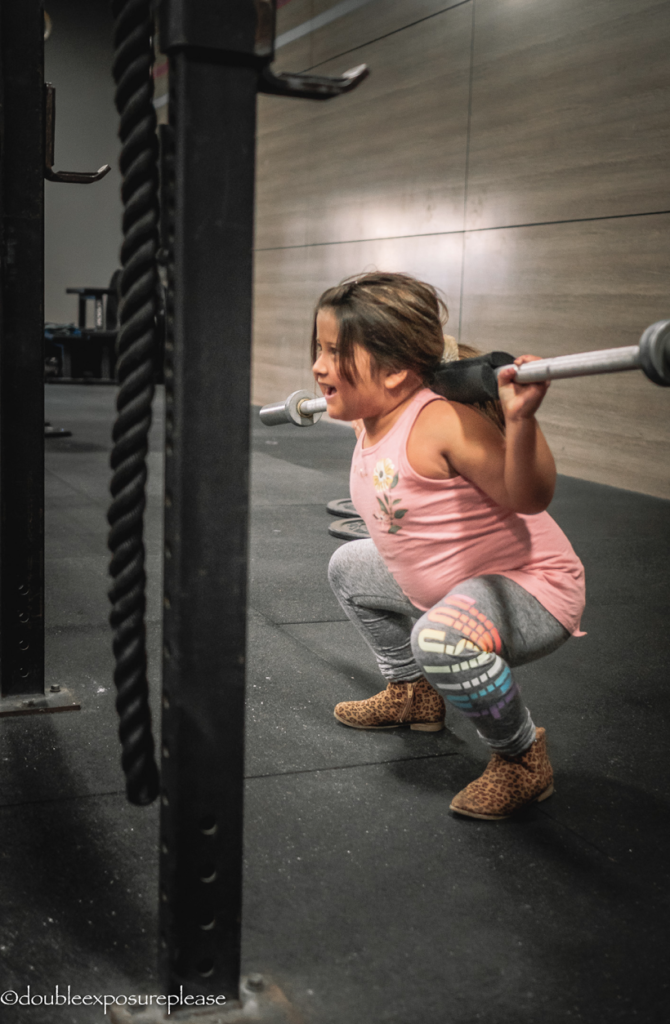
Technique absolutely does matter and there will be movements built into a well designed program with which to emphasize technical proficiency. Often, a deterrent for starting youth resistance training is the belief that there is an increased risk of injury if the technique is not performed with absolute perfect form. Yet, we don’t wait until an athlete has a perfect swing to allow them to play baseball or a perfect cut to allow them to play soccer. We accept that technique will come as they continue to participate in sport and they will become more technically proficient if we create an environment through drills and loading strategies that further develop those skills. A large portion of what makes an individual more athletic is predicated upon being able to perform a task in ways that no other individual can. Therefore, expecting every athlete to look the exact same is likely not the best approach to developing skills.
The Program Components
As mentioned above, we advocate that the primary components of a youth resistance program be based around a barbell. This allows for the most scalable, accessible apparatus to be utilized in order to maximize strength gains. The primary movements include the squat, deadlift, overhead press, and bench press. Within these four lifts there are countless variations that can be scaled due to both equipment constraints and the technical proficiency of an athlete. While these movements form the core of the program, there will be various unilateral exercises and other general physical preparation / skill work included as means for developing well-rounded athletes. The ratio of skill and resistance training work in a workout will necessarily vary throughout a season but a case will be made that these comprise the basic approach to developing a broad athletic foundation.
For the core lifts, each may be scaled according to an athlete’s experience. It is okay to start learning with dumbbells and kettlebells in the form of a goblet squat or deadlift. Once an athlete has mastered these basic movements and can adequately move weight sufficient for barbells, we would recommend moving on. In the following videos, the fundamentals of each movement will be linked as well as common errors seen when performing the movements.
Squat
An athlete may need to initially begin with a goblet squat using a dumbbell or kettlebell. Here, they are getting to begin the pattern of squatting with a lighter weight. A good place to start for foot placement is having the athlete jump two or three times, and their landing position can approximate their initial squat stance. Cues initially should focus on getting athletes to interact with their environment, for example asking kids to “twist the ground apart” with their feet as a means of cueing knee position. A global cue descending “like you are going to pick up a bag of dog food” can be helpful to establish positioning. Cues such as “butt back” or “chest up” can be useful, but it is often more effective initially to work towards external cues. In the figure we see an athlete performing an excellent goblet squat as a novice athlete. Knees are allowed to go past toes, and the progressive loading will allow for transition to a barbell if not incorporated already.

Deadlift
Below, an athlete is demonstrating a set up for a conventional deadlift. There are other variations often taught, and as mentioned above, variability has a place in training as well. If a youth athlete chooses to use sumo deadlifts or their coach is more comfortable teaching this variation, this works just as well.
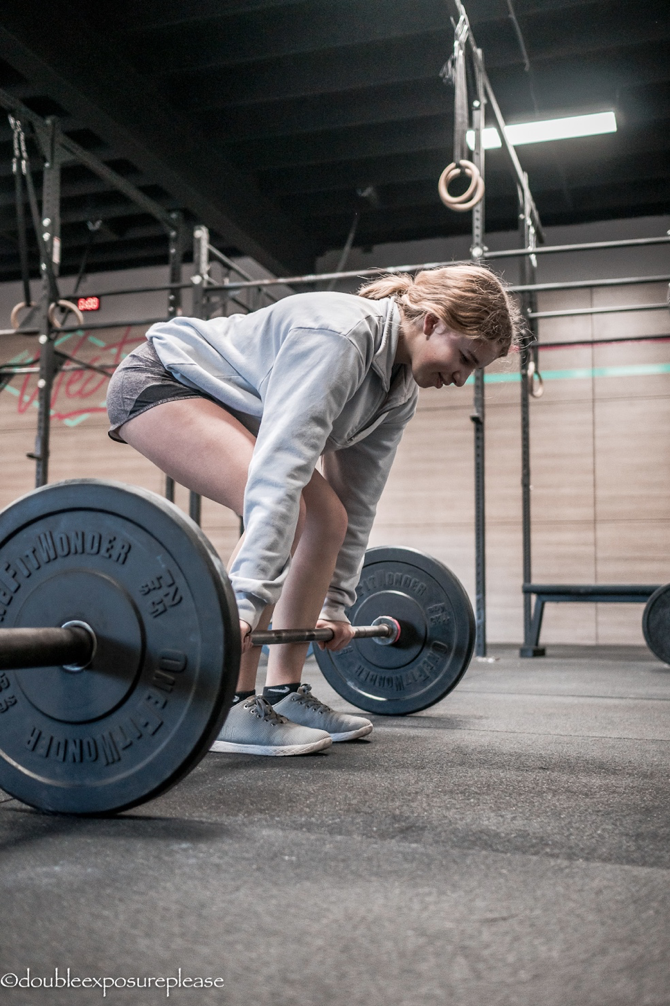
Press
Bench Press
From these core lifts, a basic program will be advocated with variation according to age-specific constraints. From this point forward, recommendations will be for athletes at least middle school aged and in the “learning to train” section of the Long Term Athletic Development model. Workouts should last approximately an hour to an hour and a half and will include a non-specific warm-up focused on physical literacy or general physical preparation, a lower-body compound lift, an upper-body compound lift, one to three variation lifts, and an optional skills component to work on jumping, change of direction, landing mechanics, or other sport-specific tasks.
A sample program for a week can be seen below.
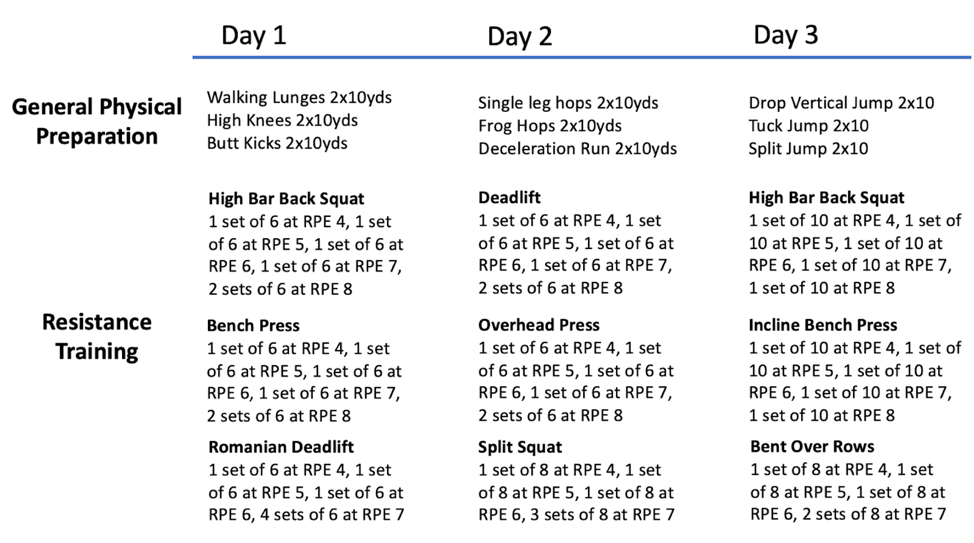
The program will address fundamental movement skills such as landing, deceleration, and jumping in the warm-up then be followed by resistance training. The original set/rep scheme is designed to allow an athlete to familiarize with RPE while still gaining exposure to harder sets. As the program progresses, the lower intensity sets will be removed with focus on warming up with the movement being sufficient. The additional work then comes in the form of variation in exercises that may involve throwing movements, single leg exercises, general conditioning, and novel movements. This would evolve into later programming looking like the figure below.
The program above would be more beneficial for an athlete that has gained experience with the primary lifts. Here, the RPE is higher for the primary lifts, different exercises are being used with the same primary focus. There is also the addition of a physical literacy component with additional work on a variety of movements. The ability to get from the floor to standing, a fast hip hinge as in jumping, and hanging/climbing are all fundamental attributes an athlete should possess. The goal with the physical literacy component is to continue to hone different skills using the increased capacity developed from resistance training.
Variables can be changed in order to accommodate the athlete’s schedule. If the athlete can only perform a two-day split, days 1 and 2 would suffice. An athlete who only wants to train could easily run a four-day split in which instance there would likely be integration of a full general physical preparation day. The day would be devoted to conditioning via low intensity steady state (LISS) conditioning or high intensity interval training (HIIT) as well as trunk work and any other area where the athlete can use additional work. Both LISS and HIIT have a place in training as LISS allows for more ideal training of the aerobic system. It also opens the possibility for AMRAPs (as many reps as possible) where there is a time-priority on a movement (or set of movements) instead of the task being performed.
For any program to be effective, there needs to be consistent training with the goal of the summation of small positive training effects over time. In terms of youth training, this can be in terms of estimated 1RM increasing, developing a new skill, or increasing physical literacy. If the goal is not to step on a platform and compete as a powerlifter, e1RM does not need emphasis while an athlete is in season for another sport. An athlete following a program incorporating the basic movements, with small progressive overload, will be more resilient, more athletic, and better positioned for success than their untrained peers.
This program is safe to start as an athlete transitions to the learning to train phase of development and should be an integral part of every athlete’s training paradigm.
